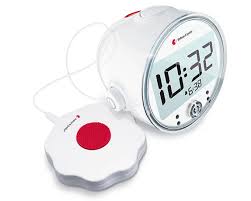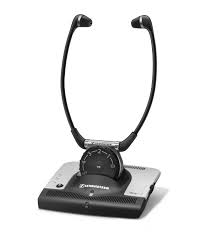
Hearing Aids
General Information
Hearing Aids come in a wide range of styles and colours and can vary from Behind The Ear hearing aids to Custom In The Canal hearing aids. When we think of what options are available to us when we have a hearing impairment, hearing aids are at the forefront. However there are many options and hearing aids are just one of them. Over time hearing aids have evolved from simple amplification devices to more sophisticated electronic nano-technology allowing us a hearing result closer to “normal” than has ever been perceived before.
Hearing loss is the most common physical condition in Australia after back pain. Around 22% of people aged 15 and over are hearing impaired, and each year more than 100,000 of them choose to be fitted with hearing aids. www.choice.com.au)
Communication Tactics
We all know that being able to hear conversation can be difficult at times, even with normal hearing. However for those who have a hearing impairment it becomes more than just listening to the sounds or conversation around us. Even when hearing aids are fitted optimally and sound is once again heard well, it still requires a lot of concentration, lip-reading and watching facial expression and body language to understand what is being heard or said.
More Information
The Real Cost of Hearing Aids
Unlike our other senses, hearing is a cognitive function. A cognitive function is an ability to process thoughts, primarily those associated with things like memory, the ability to learn new information, speech, and comprehension. When our hearing deteriorates, we aren’t using this function as effectively as we would otherwise, causing other associated issues such as: tension and stress, fatigue, irritability, embarrassment, anger, avoidance of and withdrawal from social situations, depression, loneliness, social isolation and danger to personal safety to name a few. Hearing, listening and comprehending are all reliant on brain function, so your hearing is only as good as the effort you (and your Audiometrist) invest in it, to retrain your brain to make sense of this different information.
More Information
What Makes A Successful Hearing Aid Fitting?
Wearing a hearing aid can be challenging at the best of times. Unfortunately it is not as simple as putting the device in your ear and your hearing is restored to it’s original sounds.
More Information
There is a lot that has to be considered when fitting and programming a hearing aid, including the comfort of having a physical presence in your ear and the way sounds are amplified to give you quality clear sound.
Types of Devices
All hearing aids are the same inside, it’s how they look and are worn that makes them different.
The most common hearing aids are the ones worn Behind The Ear (BTE). They’re relatively easy to maintain and are suitable for all levels of hearing loss. In more recent years BTE
hearing aids have evolved into a similar yet more effective device known as Receiver In The Canal/Ear (RIC/RITE). This type of hearing aid encompasses the ease of use of a BTE
aid with the clarity of speech discrimination of an In The Ear (ITE)
hearing aid without causing occlusion—the uncomfortable feeling of having your ear canal blocked off, similar to that of plugging your ears with your fingers.
Hearing aids worn In The Ear (ITE), In The Canal (ITC)
or the smallest type Custom In The Canal (CIC), are suitable for mild to moderate hearing loss. Cochlear and Auditory Brainstem Implants are effective in some cases of profound deafness.
Another option other than hearing aids are Alternative Listening Devices (ALD’s). These are available for limited hearing problems and may be all that is required. For example; amplified phone; TV listeners; or smoke alarms.
There are also hearing aids available with further options available other than the standard features;
Directional Microphones
Two microphones are aligned on the hearing aid to improve the input of sounds from around you with some reduction of background noise around you. This is almost standard on all hearing aids now with the exception of CIC and some ITC hearing aids.
Bluetooth
Some hearing aids have Bluetooth compatibility, using a wireless interface that will pick up a signal from other compatible devices and transmit it to the hearing aid. For example, mobile phones, so you then don’t have to hold the mobile phone to your ear, MP3 players, TV etc.
Television Adaptors
Latest hearing aid technology is now incorporating features to allow a direct link between the aid and the television. This allows the wearer to hear the television at a comfortable volume for themselves through the hearing aids, leaving the actual volume of the television to be adjusted by others who may like the sound not as loud or even on mute.
Inter-ear Communication
Hearing aids can now talk to each other—just like our ears do. That is, the functions in the hearing aids are adjusted instantly depending on your environment . So even when your going from a quiet environment to a noisier one, you can still hear clearly.
Remote Controls
Hearing aids can also make use of remote controls to adjust volume, and other functions without having to reach up and to the hearing aid.
Telecoil
Also referred to as a Sound Loop this technology makes it easier to hear on the telephone and in some public halls, theatres or churches. The telecoil only picks up the sound from within the loop eliminating other background noises around you. Hearing aids require manual change to activate this feature, while some hearing aids will switch automatically when answering the phone. This technology only works with telephones with hearing aid compatibility. Mobile phones are increasingly becoming more compatible with this feature.
Alternative Listening Devices
These are any device other than a hearing aid that offers assistance with hearing is specific situations. They include Infra-Red Headphone TV listening appliance, shake wake alarm systems, strobe light smoke detectors, amplified/hearing aid compatible telephones and many more.


